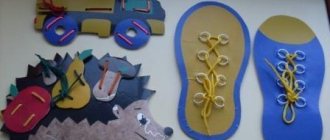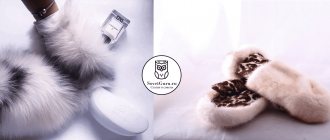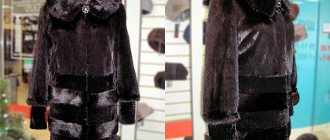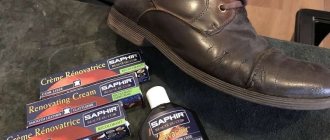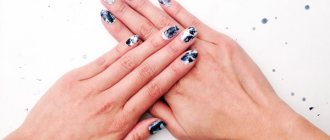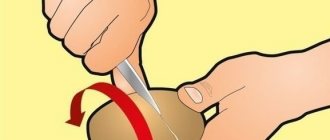If the decoration of the window opening was done with their own hands, then the craftswomen often have pieces of fabric or tulle left over. There is no need to throw them away - the remains will serve as material for making designer items that will look stylish in the interior of a room where curtains serve as the basis. What this could be and how to do it - let’s look at an interesting question.
Beautiful remnants of tulle
Other options for items made from old tulle remnants
Tulle is used to decorate old cabinets, chests of drawers, etc. The surface needs to be prepared: sand the wood, degrease the laminate and prime it.
The main tools for work are a trowel, a spatula and a hair dryer. The tulle is placed on a layer of Venetian plaster and smoothed so that it penetrates through the holes of the fabric, then the fabric is removed.
After the surface has dried, it is covered with a thin layer of plaster of a different color. The contrast of shades makes the relief pattern more expressive.
Old curtains can be useful as mosquito nets, liquid filters, protection of berry bushes (for example, serviceberry) from birds, and as a means of tightening fish during drying.
Making pillows from old tulle
There are several options for decorating pillows:
- Case. For its manufacture, tulle with a pattern that looks like lace is more suitable. A tulle cover is put on top of another (made of curtain or satin fabric). If the material is bright or dark, the light tulle pattern will be more visible on it.
- Applications on pillowcase fabric. They can be in the form of petals radiating from the center of the pillow, flowers, leaves, circles, squares. 1-5 applications are placed on one side depending on their size.
- Draping a pillowcase with a piece of tulle. Chiffon is used more often.
You can sew a pillow cover 45x45 cm like this:
- From the main fabric and the curtain, cut out rectangular fabrics 45x90 cm with seam allowance.
- Fold the tulle in half and iron the fold. Place it with the wrong side on the right side of the satin and pin.
- Sew the fabric from the front side along the fold of the tulle. This will fix the upper fabric: it will not sag or move during use of the product.
- Fold 2 layers of fabric right sides together and stitch on both sides, leaving a 10-15 cm section open in the center of the third seam.
- Turn the pillowcase inside out and stuff it with holofiber or other filling. Sew the seam by hand.
If desired, the pillow can be decorated with beads, beads, ribbons or fabric roses. The cover, which is 1/3 smaller than a pillowcase and is cut from a fragment with scallops, looks beautiful. Each one has a decorative element, such as a button, that attaches the cover to the pillowcase.
For appliqués, it is better to use patches of cotton tulle with patterns and finishing braid. The footage of the latter depends on the number of applications and their size. The cut out parts are trimmed with braid and sewn onto a pillowcase.
For drapery, take a piece of tulle-chiffon 2.5-3 times wider than the area on which it will be placed.
Step-by-step work:
- Process the tulle along the side sections with a bias tape that matches the tone of the pillowcase, and gather it into folds (counter or one-sided).
- Place the piece on the square fabric of the pillowcase (diagonally, in a corner, etc.), pin and stitch with it on the seam allowance areas.
- Place the 2 square parts of the cover right sides together, stitch and turn inside out. The tulle drapery, located diagonally on the pillowcase, is tightened in the central part with a decorative element made from the main fabric.
Beautiful DIY tulle rag
I haven't used foam sponges in the kitchen for over a year now. They spoil quickly and are of little use. I take mesh washcloths. I like them better. I came up with the idea of making something like a sponge out of old tulle.
- Option #1. I cut off a strip of tulle (the most frayed part) about 15 by 50 cm. I cut out a circle with a diameter of 20 cm. I took a needle and thread stronger and threaded it in a circle. She pulled it slightly. She stuck the first piece of fabric inside. I tightened it and made a knot. I cut the thread. The result was exactly the same mesh as is sold in stores. Only many times more beautiful.
- Option #2. With my second craft, I aimed to benefit not only from old tulle, but also from the remnants of toilet soap. I cut out a square 30 by 30 cm. Folded it in half. I sewed the edges, leaving a gap of 5 cm. Through this I filled the “pocket” with remnants. I tied it in the middle with twine so that the remnants were on the opposite side of the hole. I made a loop (tied the ends of the twine). It turned out something like this:
It turned out that the old tulle whips up foam perfectly. Dishes wash well. Beautiful rags are pleasing to the eye. I've been using it for 2 weeks now and it looks like I made it yesterday. And they dry very quickly. I'm completely satisfied with them.
Pillow
To make a pillow you need two pieces of thick fabric and tulle of the same size. Cover the pieces of fabric with tulle, then sew them together on three sides. One side will remain open for stuffing. Any materials can be used as padding. Then you need to sew the last side - the pillow is ready.
You can make not a pillow, but a cover. In this case, the fourth side does not need to be sewn tightly; it is more practical to insert a zipper or sew on buttons with loops.
Decorating curtains with leftover tulle and sewing useful little things: master class
If the decoration of the window opening was done with their own hands, then the craftswomen often have pieces of fabric or tulle left over.
There is no need to throw them away - the remains will serve as material for making designer items that will look stylish in the interior of a room where curtains serve as the basis. What this could be and how to do it - let’s look at an interesting question. Beautiful remnants of tulle
Sewing tablecloths and curtains
A tablecloth made from an old curtain will decorate a table in the garden, on the veranda, and a translucent curtain will decorate a country-style kitchen.
Any type of tulle is suitable for a tablecloth:
- lace (it is better to use it yourself);
- transparent with a color or monochrome pattern (lay on top of a plain tablecloth);
- smooth, transparent without patterns (combined with multi-colored fabric).
The bottom of the tablecloth is made smooth, in the form of waves or elongated on 4 sides (near the table legs). The edge is treated with tape. A tulle tablecloth can touch the floor (see photo) or be a short companion cape for the main textile (naperon). For a round table, the topper is sewn in both round and square shapes. The minimum length of its hanging from the tabletop is 15 cm.
Curtains are sewn in a patchwork style, alternating scraps of tulle and other materials of different texture and color, and assembling them into a single fabric of the required size. The fabric is cut into shreds using a template. They use the simplest and most beginner-friendly shapes - square or rectangle. Tulle elements can make up half of the total number of patches. The edges of the curtains are edged.
How to update an old curtain rod?
Paste over You can decorate the cornice by pasting it with wallpaper, fabric to match the curtains, or making decoupage from napkins. The selected fabric is glued onto an abrasively sanded base using PVA, and the edges are folded inward. After drying, apply 2 layers of protective varnish.
Interesting materials:
How do worms appear? How do chicken eggs appear? How do cones appear on a pine tree? How to catch a beaver during the day? How do electronic insurance policies show traffic cops? How to praise a leader? How healthy is it to cook beets? What is Hitler's full name? How to put decorative stone on wallpaper? How to lay linoleum without waves?
Blanket or bedspread
Making a folded cover for a chair is easy. You need to take a piece of dense material and stitch tulle to it. Place the stitch around the perimeter and the entire area of the canvas so that you get squares. Overcast the edges of the new bedspread or hem it with a beautiful ribbon.
How can you put an old carpet to good use in your dacha or at home?
If you put a soft sheet of padding polyester between the tulle and the canvas, you will get an excellent warm blanket. The thicker the lining, the more textured the squares of the folded bedspread.
Methods for bleaching tulle
Before starting work, the fabric should be washed with a mild detergent at a temperature of +30°C.
White tulle that has acquired a yellow or gray tint can, if necessary, be bleached in the following ways:
- Any modern bleach for delicate fabrics.
- Salt. Dissolve 3-5 tbsp in 5-6 liters of warm water. coarse table salt (non-iodized) and washing powder in accordance with the recommendations on the package. Soak the fabric overnight.
- Zelenka. Pre-wash the curtain. Add 5-8 drops of brilliant green to 6 liters of water, stir well and wait a few minutes until the product is completely dissolved. Leave the fabric to bleach for 1 hour.
- Soda. Dissolve 1 tbsp in 5 liters of water. soda (50 g) and washing powder. Soak the curtain for 20-30 minutes.
- Hydrogen peroxide. Leave the fabric for 2 hours in the solution: 2-3 tablets of peroxide and 50 g of washing powder per 7 liters of hot water (approximately 60°C).
Before work, you need to take into account that different types of tulle react differently to bleaching agents:
- Green paint is not suitable for organza (the curtain may become stained).
- Natural flax can be boiled (ammonium bleaches it best).
- Hot water and hydrogen peroxide can damage the thin veil.
The bleached canvas needs to be rinsed, dried and ironed well - then it will be easier to cut out parts for crafts on it.
Placemats
Thin tulle is not suitable as a stand; the material will have to be starched to keep it in shape. It is much easier to cover an old CD with pieces of tulle by tucking the edges and gluing them along the edge of the disc. To hide unsightly ends, you need to glue a second disc on top. The edge is covered, the stand retains its shape - it looks very nice.
Tablecloth
Cut a piece of tulle exactly to the size of the table plus allowances for overhangs. A colored ribbon or a beautiful stitch will serve as a border - the tablecloth is ready.
How can you use soap remnants in everyday life instead of throwing them away?
A chic tablecloth is made from a harsh linen on which strips of openwork tulle are sewn. Napkins are made in the same way, and you get a unique set of kitchen textiles that looks very expensive, but costs literally pennies.
